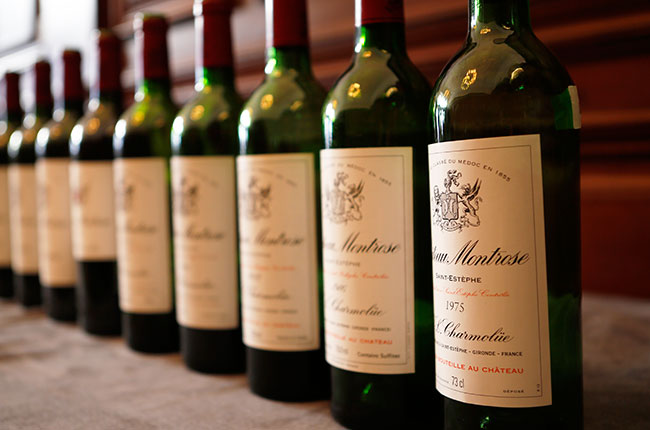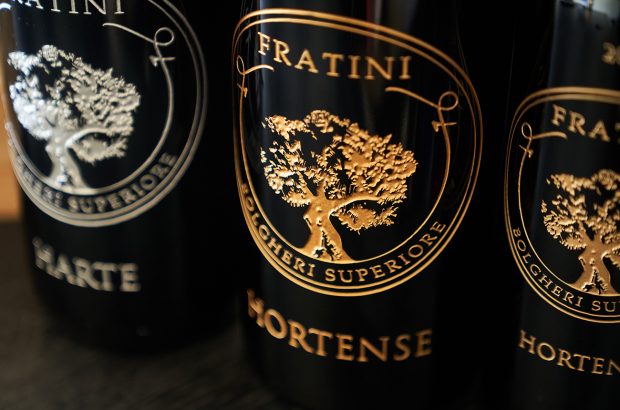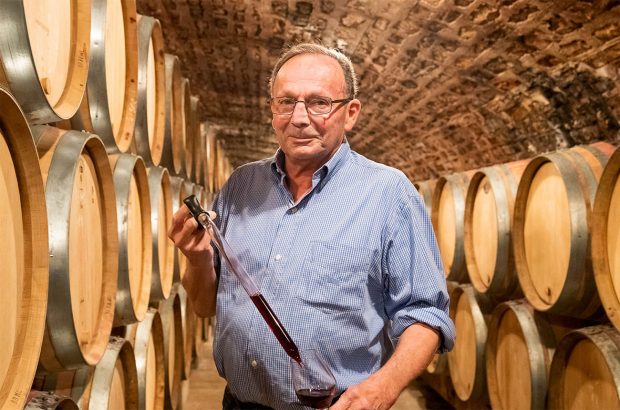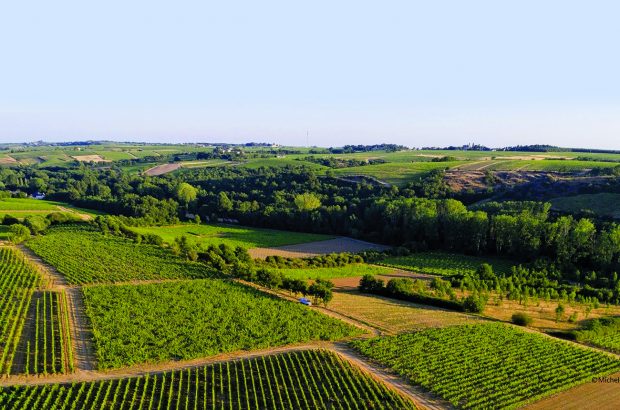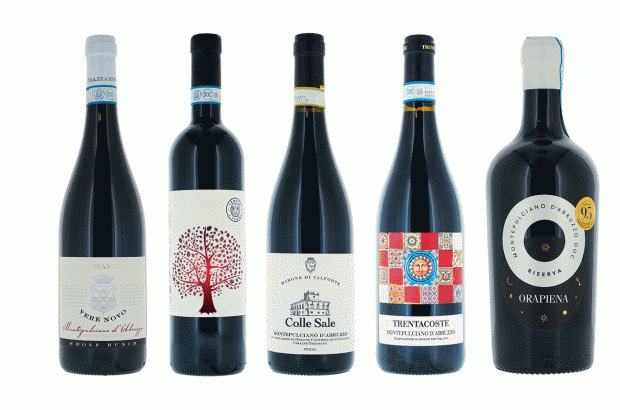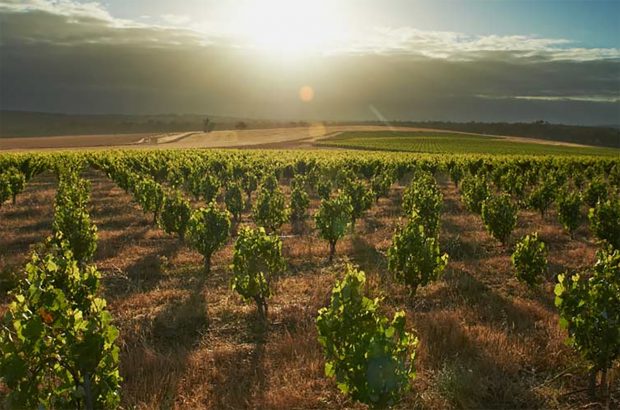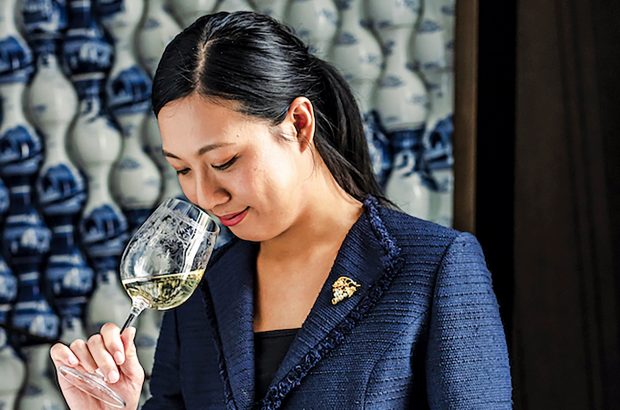Springtime and an alley of pink roses at the Château Montrose estate rekindles the myth surrounding the name of this Saint-Estèphe second growth. The legend is simple and, perhaps to the chagrin of the Dukes of Montrose, includes no Scottish forebears. Prior to the first vine plantings in 1815 the area was largely scrubland covered with gorse, broom and heather. When the heather flowered it gave a noticeable pink tint to the hills which was visible from a distance, in particular from the boats on the Gironde estuary – hence the local reference to ‘mont rose’. The story is unconfirmed but provides an attractive and plausible fable for one of the Médoc’s most esteemed crus.
History
The history of Montrose is otherwise relatively short and concise compared to that of many of the classed growths. In 1778 Nicolas Marie Alexandre Ségur, having spent much of the family fortune, was obliged by act of the Bordeaux parlement to sell the estate of Calon-Ségur, including what is now Château Montrose, to Etienne Théodore Dumoulin. Thirty-seven years later his son, also Etienne Théodore, realising the potential of an area of gravelly scrub to the south of the Calon estate known as ‘La Lande de l’Escargeon’, started clearing the land and planting vines. By 1825 five to six hectares (ha) had been planted, a small château and cellars built, and the name Montrose clearly registered in the first official survey of Saint-Estèphe.The year before Etienne Théodore had sold the bulk of the Calon estate to Firmin de Lestapis retaining sufficient land to continue the expansion of Montrose. By 1832 there were 31ha under vine and the wines had begun to make a name on the Bordeaux market. The 1855 classification later confirmed the market standing of Montrose, judging the property a second growth. By this time the estate constituted some 96ha, of which 50 were under vine, producing a yearly volume of 100–150 tonneaux (10–15,000 cases) of wine.
In 1861 Etienne Théodore Dumoulin died leaving the property to his heirs. They in turn sold the estate to Mathieu Dollfus in 1866. Dollfus instigated a programme of modernisation, erecting a number of new buildings including houses for the estate workers. Much of this small ‘village’ is still intact today. The expansion of the vineyard continued and by 1880 the present surface area of 68ha under vine had almost been attained. The onslaught of phylloxera that followed was contained, first by soaking the ground with water via a system of iron pipes and then, at a later date, by grafting onto American rootstock.
The death of Mathieu Dollfus in 1887 led to the sale of Montrose, and in 1889 the property was acquired by Jean-Jules Hostein. A few years later in 1896 the estate again changed hands, now purchased by Hostein’s son-in-law, Louis Victor Charmolüe, also owner of Cos d’Estournel and Pomys, and later mayor of Saint-Estèphe. Since then the property has remained in the hands of the Charmolüe family. Since 1960 it has been owned and managed by Jean-Louis Charmolüe, a quiet spoken man with a degree in agricultural science from Toulouse, and the air of a gentleman farmer. From 1990 a régisseur has been employed to ease the workload and provide a permanent presence at the property. The continuity of family ownership, and the commitment of the various proprietors, has been one of the strengths of Montrose over the years.
The terroir
The other undeniable asset has been the terroir. Situated on a gravel knoll some 800 metres from the estuary the vineyard has an identical profile to that of Château Latour and the grand clos of Château Léoville Las Cases.The vines, which form a single contiguous block surrounding the château and cellars, benefit from a southeasterly aspect, the north-south position of the rows providing day-long exposure to the sun. The gentle slope offers good drainage, and the proximity of the Gironde adds a mesoclimate that helps protect against frost, assuages the summer heat and generally assists in the ripening cycle.
The gravel is deep and formed of large pebbles laced with ferrous sand, above a marly clay. All of this enhances the tannin element in the wines. ‘It is an excellent site for Cabernet Sauvignon,’says Professor Pascal Ribéreau-Gayon, the long-time consultant oenologist at the estate.Cabernet Sauvignon in fact represents 65% of the plantings and constitutes over 70% of the blend in certain vintages. The balance is provided by 25% Merlot, 10% Cabernet Franc and a fraction of Petit Verdot. Like Latour, Montrose has remained true to tradition producing wines that are deeply coloured, firm, powerful and austere in youth but with an amazing potential for ageing. A 1929, tasted some years ago in Paris, had all the freshness and fruit of a wine of 20 rather than 60 years of age. Accusations that this style was knowingly softened in the 1970s and early 1980s are unfounded. ‘There was no deliberate ploy to change the style, but the wines were lighter due to the succession of difficult vintages (1972, 1973, 1974, 1977, 1980), the higher percentage of grapes from recent plantings and a problem we had with grape moth in 1983,’ explains Jean-Louis Charmolüe. Since 1986, the solid Montrose style has been back on song, with an added edge of ripeness from the later harvesting.
Vine density stands at 9,000 vines/ha, the average age of the vines is 30 years, the land is ploughed and the method of pruning remains the classic double guyot, but with a slightly raised trellis. Chemical treatments are used for oïdium, mildew and botrytis. Yields over the last 10 years have been more severely controlled. ‘The ideal at Montrose is 45hl/ha whereas at Château Lynch-Bages, where I previously worked, it is possible to make a great wine with 60hl/ha,’ says Philippe de Laguarigue, régisseur since 1998. In July and August grape bunches in the parcels of Merlot, Cabernet Franc and the more vigorous Cabernet Sauvignon are thinned; just before the harvest some of the leaf cover is removed. Since 1973 the harvest has been carried out by a team of Spanish pickers who hail from a village near Seville.
In the cellars the grapes are destemmed and vinified in a mix of wooden, concrete and epoxy-lined steel vats. A saignée for each tank is now almost systematic, the juice then vinified at a temperature that never exceeds 32˚C, with regular pumping over and a little délestage. In all, the vatting time extends over a period of up to three weeks. Work practices, however, are set for a shake up this year with the inauguration of a brand new, spacious, FF16 million (£1.4m) cellar which is presently under construction, including 36 stainless steel tanks with a computerised system of temperature control.Once the malolactic fermentation has been completed the wine is run off into oak barrels, 55% of which are renewed yearly. Selection for the grand vin takes place in the early part of the following year and has become stricter. Wines eliminated from Château Montrose go into either the second wine, La Dame de Montrose, originally introduced in 1984 and one of the best second labels in the Médoc, or are sold as generic Saint-Estèphe. Château Montrose usually includes six to seven percent of the press wine and is aged for up to 19 months in a capacious first-year cellar Jean-Louis Charmolüe constructed in 1983, then below ground in a second-year cellar built in 1875. During this period the wine is traditionally racked and fined with egg whites, but not filtered prior to bottling. Production now stands at around 16,000 cases for Château Montrose and 12–13,000 cases for La Dame de Montrose.
A tasting of recent vintages confirms the style and consistency of Montrose. Can anymore improvements be made? ‘There’s still lots to be done in the vineyard’ says Philippe de Laguarigue. Bruno Lemoine, the former régisseur, now directeur général at Margaux’s second growth, Château Lascombes, believes it is a question of continuous fine-tuning: ‘When you already have a cut diamond all that is required is the polish.’


